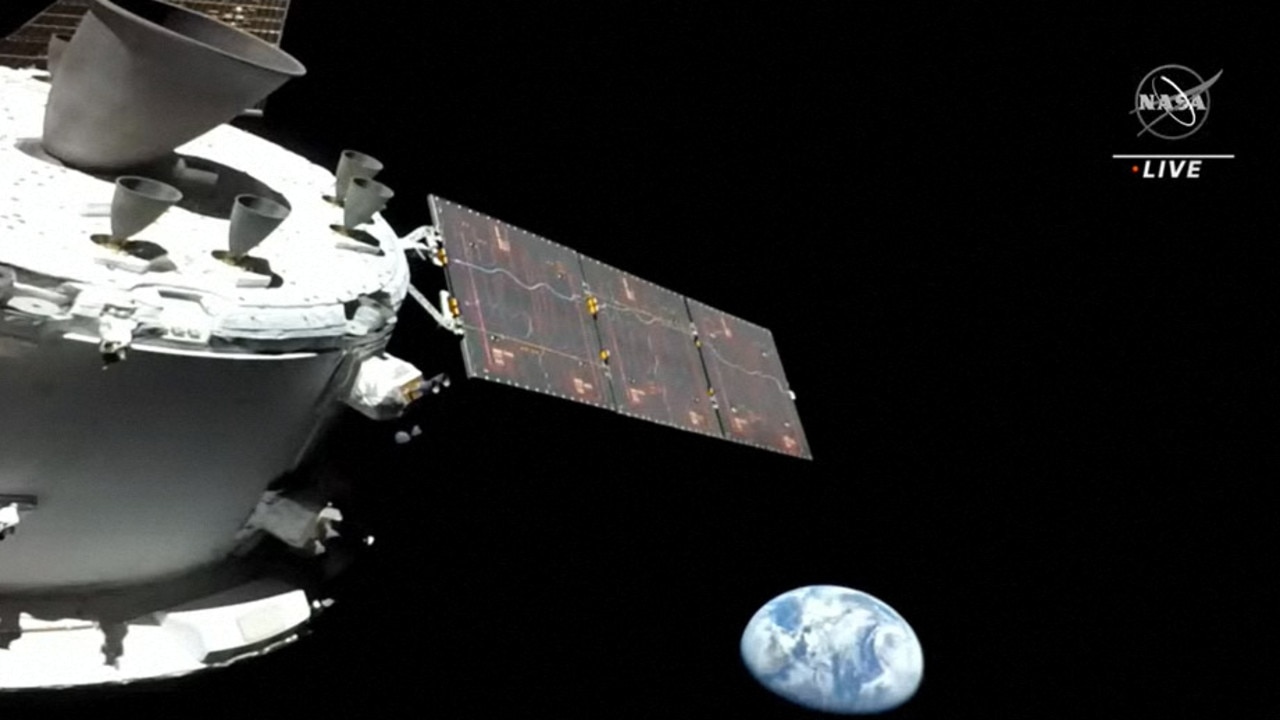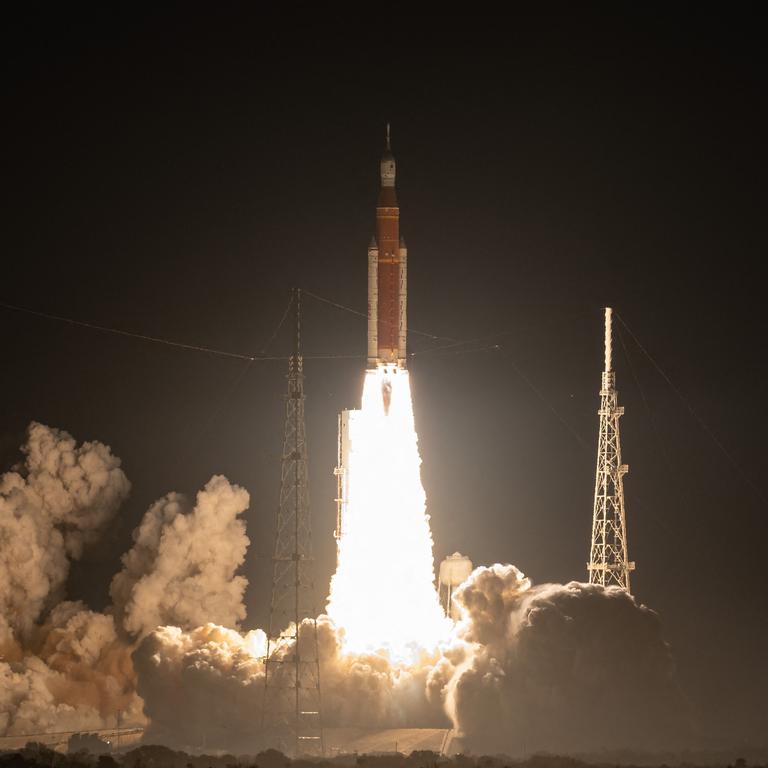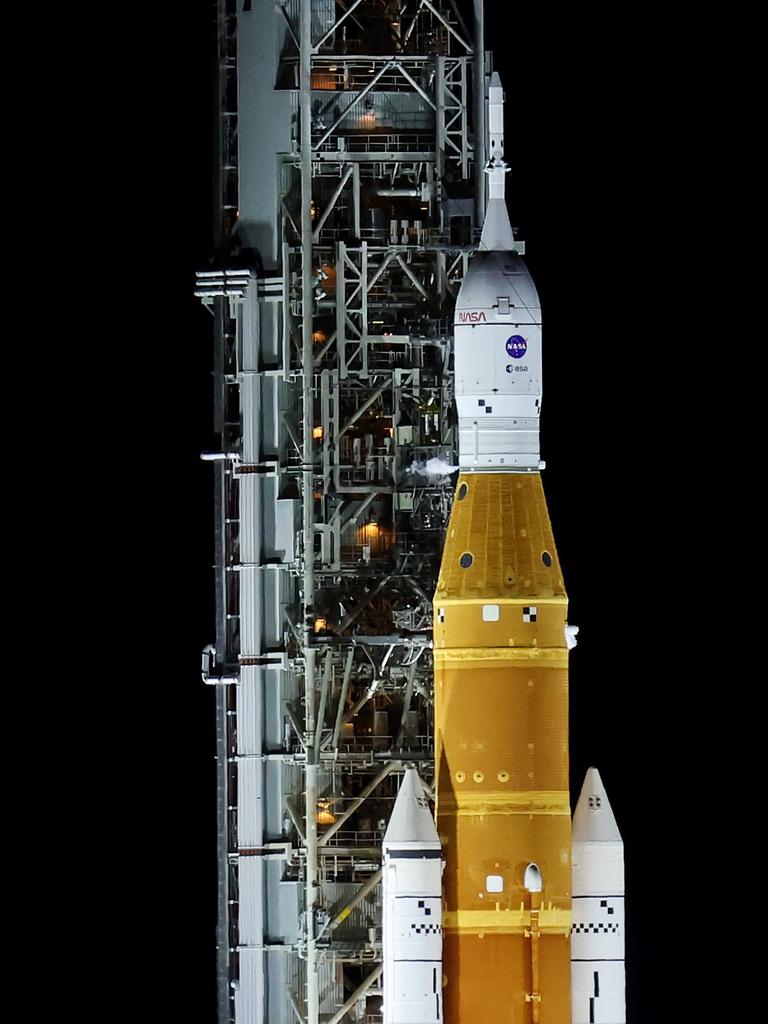Lift-off! NASA launches spaceship to the moon, beginning Artemis era of exploration
NASA has finally launched its Artemis 1 mission to the moon after months of technical and weather delays

READING LEVEL: GREEN
NASA has launched the most powerful rocket ever built on a journey to the moon, marking the start of its new Artemis space exploration program.
The 32-storey tall Space Launch System (SLS) blasted off from the Kennedy Space Center in Florida in the US on Wednesday, November 16.
“What you have done today will inspire generations to come, thank you!” said Charlie Blackwell-Thompson, NASA’s first female launch director.
Fixed to the rocket’s top was the uncrewed* Orion spaceship that will orbit the moon in a test run for later flights that should see the first woman and first person of colour touch down on lunar soil by the mid-2020s.

About two hours after launch, NASA said the spacecraft was on its trajectory* to the moon, and later released the first images taken of Earth receding* behind the craft.
“Now we are going back to the moon, not just for the sake of going to the moon, but to learn how to live on the moon in order to prepare to send humans all the way to Mars,” NASA administrator Bill Nelson said after the launch.
“This is the next beginning, this is the Artemis generation.”
The US last sent astronauts to the moon during the Apollo era, from 1969-1972. This time it hopes to build a sustained* presence – including a lunar space station – to help prepare for an eventual mission to Mars in the 2030s.

There were nervous moments as teams worked to overcome technical issues that ate into the two-hour launch window.
First, engineers had to stop a valve leaking liquid hydrogen into the rocket’s core stage on Tuesday night.
Later, the space agency reported that a radar site monitoring the rocket’s flight path was experiencing problems due to a faulty ethernet switch, which had to be replaced.
It was third time lucky for NASA after two previous launch attempts were cancelled for technical reasons. The launch was also delayed due to weather setbacks including Hurricane Ian, which battered Florida in late September.
The Orion spaceship was lifted by two boosters and four powerful engines under the rocket’s core stage, which detached after just a few minutes.
A final push from the upper stage set the spaceship on its way to the moon, though it will take several days to reach its destination.

The upper stage will meanwhile release 10 mini satellites, known as cubesats, to carry out scientific experiments, including one that will unfurl* a solar-powered sail and perform asteroid reconnaissance* work.
Rather than landing on the moon, Orion will orbit the moon, venturing 64,000km beyond the far side, further than any other habitable* spacecraft so far.
Finally, the spaceship will embark on the return leg of its journey. When passing through the atmosphere, the capsule’s heat shield will need to withstand a temperature half as hot as the sun’s surface.
Though Orion isn’t carrying humans this time, it has three sensor-equipped dummies on board to help gather safety data for future crew members.

The Artemis 1 mission will last 25 days, with a scheduled splashdown in the Pacific Ocean on December 11.
NASA is banking on a successful mission after developing the SLS rocket for more than a decade.
It will have invested more than $US90 billion in its new lunar program by the end of 2025, according to a public audit.
Artemis 2 will involve a fly-by of the moon with astronauts in 2024, while Artemis 3 will see boots on lunar soil, no sooner than 2025.
GLOSSARY
- uncrewed: containing no astronauts
- trajectory: the direction followed by a moving object
- receding: gradually getting smaller
- sustained: continuing for a long time
- unfurl: unfold, open out from a rolled up position
- reconnaissance: mission to obtain information
- habitable: able to be lived in or occupied
EXTRA READING
NASA prepares to return to the moon
NASA spacecraft successfully slams into asteroid
QUICK QUIZ
- What is the name of NASA’s new space exploration program?
- Who is Charlie Blackwell-Thompson?
- What is the name of the spaceship that was attached to the top of the SLS rocket?
- How long with the spaceship’s mission last?
- How hot is the temperature the spaceship will have to withstand when it passes through the atmosphere on its return to Earth?
LISTEN TO THIS STORY
CLASSROOM ACTIVITIES
1. Create a diagram
Create a diagram that shows the different stages of the Orion’s journey from blast-off to return to Earth.
Time: allow 40 minutes to complete this activity
Curriculum Links: English, Science
2. Extension
How do space rockets work? Use the information in the story to answer this question. Then, use your research skills to find information to add more details or facts to your answer.
Time: allow 45 minutes to complete this activity
Curriculum Links: English, Science, Design and Technology
VCOP ACTIVITY
Vocabulary recycle
There is some vivid vocabulary being used in the article, and I am not just talking about the glossary words. Go through the article and highlight the high-level language that you are impressed by in yellow.
See if you can borrow two of these wow words to reuse in your own way.
Remember vocabulary is a great way to connect with the audience, but you need to think about who your audience is so you make great word choices.
Who will the audience be in your recycled sentences?

